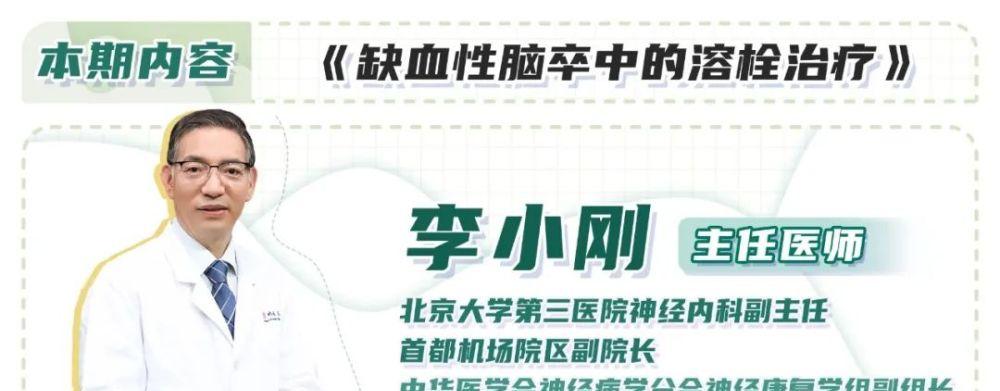
Cerebral infarction is also known as ischemic stroke, also commonly known as cerebral infarction, refers to the blockage and ischemia of cerebral arteries, resulting in neurological dysfunction, which can lead to a series of symptoms such as hemiplegia, aphasia, and impaired consciousness, which can seriously endanger life.
01 Five early manifestations of cerebral infarction
Language barrier, manifested as not being able to understand what others are saying and unable to speak on their own;
Crooked corners of the mouth;
Mild weakness of the limbs, when the arms are raised flat on the chest at the same time, there will be one side down;
Balance disorders, sudden onset of vertigo, unsteadiness in walking;
Suddenly the eyes go black, or one eye suddenly disappears.
In particular, people with risk factors such as older age, family history of stroke, "three highs", bad living habits, long-term contraceptives, and hyperhomocysteinemia should strengthen their vigilance.
According to the location of arterial blockage, ischemic stroke is divided into blocked aorta and blocked arteriole.
Depending on the cause of arterial blockage, it can be divided into arteritis, dissection, malformation, or caused by cardiogenic diseases such as atrial fibrillation and valvular heart disease.
If the above situations are excluded, it is a situation of "unknown location, unknown cause". No matter what kind of artery blockage there is, the most urgent and important thing is to restore the patency of the blood vessels as soon as possible, mainly in three ways: intravenous thrombolysis, arterial thrombolysis, and arterial thrombolysis.
Intravenous thrombolysis refers to the intravenous administration of thrombolytic drugs, such as the use of alteplase, at a dose of 0.9 mg/kg body weight. 10% of the drug is injected intravenously, and the remaining 90% of the drug is infused through the infusion pump, and the whole medication process is about 1 hour.
If the blocked artery is a large blood vessel, you can also choose arterial thrombolysis, that is, directly use thrombolytic drugs at the site of the blockage through the catheter; or directly remove the thrombus through catheter intervention; you can also combine the venous thrombolysis with the arterial thrombolysis for bridging therapy, and the effect will be better.
However, due to the fact that arterial thrombolysis and embolization need to be punctured through the artery, which is an invasive operation, so in the case of conditions, intravenous thrombolysis is preferred.
02 There is a prescribed time limit for thrombolytic therapy
The period from the onset of stroke to the time the thrombolytic agent enters the patient's blood vessels is called the time window, and only thrombolytic therapy within an effective time window can really work.
Every minute of delay, 1.9 million neurons will die completely, even after thrombolysis, they will not be able to regenerate, and can only rely on other surrounding neurons for partial compensation.
In general, after a sudden ischemic stroke, the time window for thrombolytic therapy is less than 4.5 hours after the onset of the disease, and the earlier the better.
If the time limit is exceeded, it needs to be evaluated by multi-mode CT, magnetic resonance and other tests, and if thrombolysis is feasible, the time limit can be relaxed to within 9 hours after the onset of the disease. If the thrombolytic treatment time window is missed, general treatment can only be performed with drugs such as aspirin.
03 Not all patients within the time window can be thrombolytic therapy
In addition to the time window that needs to be noted, there are some contraindications to thrombolytic therapy because thrombolytic agents may cause a risk of bleeding:
Intracerebral hemorrhage has occurred, and it is necessary to judge whether thrombolytic therapy can be determined based on the degree of previous bleeding;
Poor coagulation function, platelets below normal;
Taking anticoagulant medications such as warfarin; recent surgery, wounds may be at risk of bleeding; and blood pressure is too high, such as more than 185/110mmHg.
In addition, there is a situation in which the patient is fine before going to sleep the night before, and when he wakes up the next morning, he has hemiplegia, aphasia and other stroke symptoms, which are called post-awakening stroke.
Patients who wake up and stroke often cannot know the specific time of onset and cannot judge whether thrombolytic therapy can be carried out according to the time window of onset. What should I do in this situation?
At this time, it is necessary to pass multi-mode CT, magnetic resonance and other examinations to observe whether there is an ischemic semi-dark band (where neurons are damaged, but timely blood can be saved), and thrombolytic therapy can be carried out if there is.
04 Accompanying family members need to inform the doctor of three major information
Stroke treatment is urgent, and after the family finds that the patient is sick and sent to the hospital, they should explain the patient's situation to the doctor and help the doctor determine whether the thrombolysis can be done as soon as possible:
The specific time of onset of the patient helps the doctor determine whether the patient meets the time window for thrombolytic therapy.
The patient's condition at the onset of the disease, such as whether there is a bump, a fall, and what part of the body is bumped.
Because some bumps will not have obvious trauma, but there may be fractures in the body, bleeding may occur when thrombolysis occurs.
If the patient has been taking anticoagulants such as warfarin, it will affect thrombolytic therapy, so it is necessary to inform the doctor of all drugs taken by the patient.
References: Medical Microvision Official Website - Li Xiaogang Chief Physician "Thrombolytic Therapy for Ischemic Stroke"